Step-by-Step Guide: A photo shoot at Monza
They say a picture paints a thousand words. And this is no different. The story of how these photos came to life is a tale of sweat, shouts, and improvisations. But before we get to duct-taped tripods and missing insurance details, we must first set the scene.
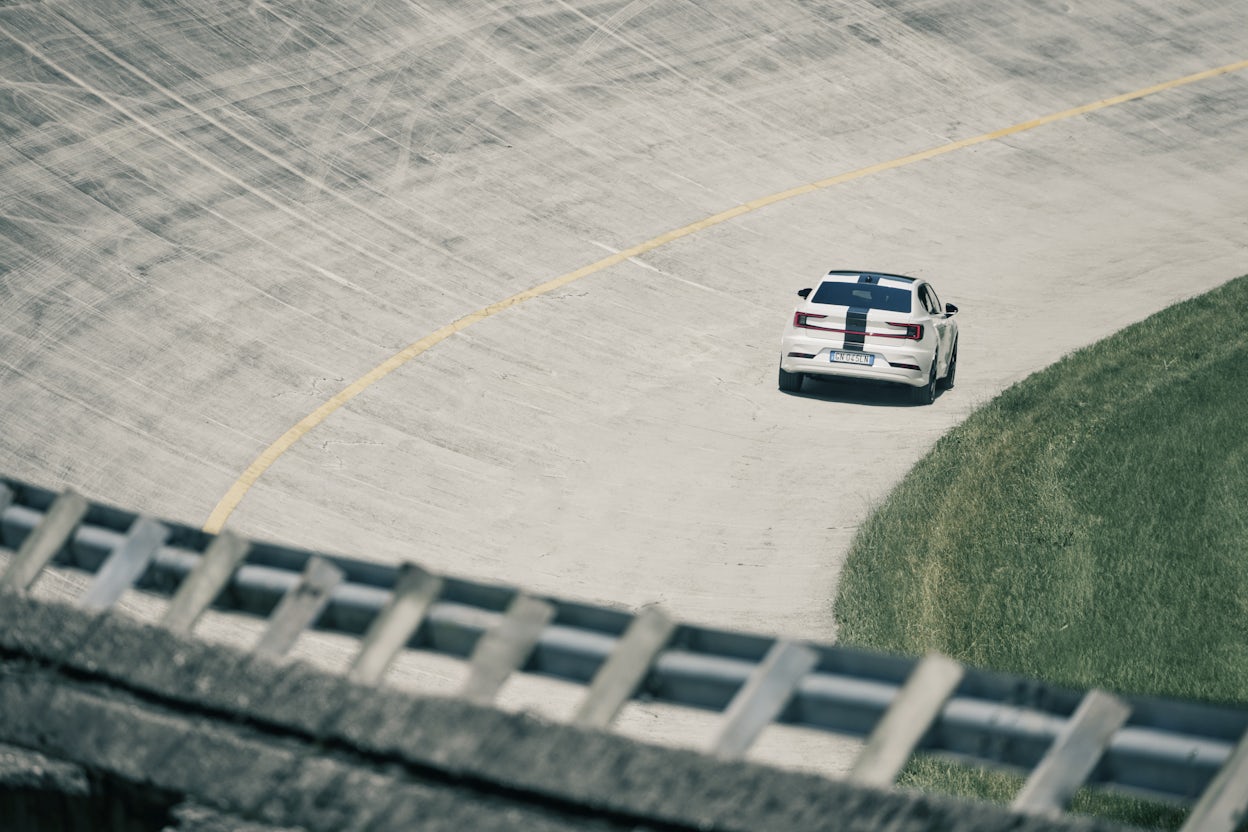
Surrounded by deep woods and vast fields of grass lies the sleeping giant, Autodromo Nazionale di Monza (English: The Monza Circuit). Built in 1922, it is the oldest circuit in mainland Europe and, perhaps most famously, host of the Italian Grand Prix for Formula 1. It is an arena of roaring engines, screaming fans, and burnt rubber. And on the early Friday morning when we arrived, the silence and empty pit lanes were truly the calm before the storm.It has been said that for Italians, cars are no different than their fashion, food, soccer, art, or architecture. It is part of their culture. Ferrari is arguably the most well-known automaker and as their founder, Enzo Ferrari, once said: "Ask a child to draw a car, and certainly he will draw it red." To some, this notion of the Italian car as striking in color and sound is in stark contrast to the idea people have of our cars. As our newest market, we have planted the Polestar flag on this shoe-shaped peninsula, but are we in uncharted territory?The reason for our visit was as much business as pleasure. For the third year in a row, the MIMO international motor show would take place on this iconic track. With more than 50 exhibitors, it is a festival celebrating automotive excellence from all over the world. We were there in full force, showcasing five of our cars, and as it was our first event in Italy, it was time to find out what the Italians really thought of our line-up.Managing Director of Polestar Italy, Alexander Lutz, underlined the importance of participating in these types of events. "There is no better place to see how well a product performs than on a racetrack". Although most people won't use their Polestar on a racetrack, knowing that you could is what's important. "Just like when you take off your Omega Speedmaster that is 100-meter waterproof when you shower, driving a Polestar with race car qualities during your everyday errands is an exciting experience" Lutz enthuses.
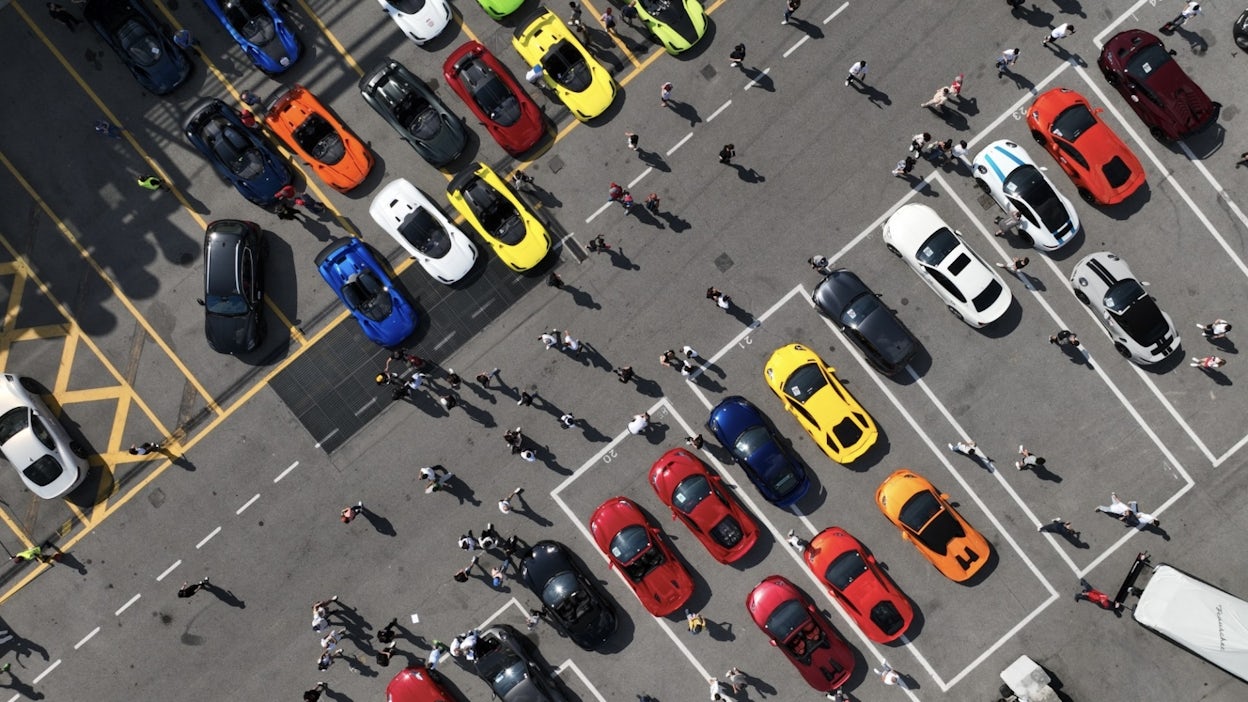
But how to stand out in a sea of red? Here's our step-by-step guide for taking the perfect racetrack photograph. It was over 86° Fahrenheit and not a cloud in sight, the concrete patch was a melting pot, both figuratively and literally. As morning turned to noon, the loud engines and parched bystanders made you feel like you were in an Italian version of Mad Max. A perfect setting to carry out an impromptu photo shoot. Therefore, always make sure to be slightly dehydrated and tired before doing a photo shoot. That's step one. Step two is to give yourself as little time as possible to prepare. We weren't even aware it was possible on the morning of the shoot. It wasn't until later in the day we realized we had a couple of minutes to spare during our 40-minute allocated track time. It dawned on us just hours before we were to enter the Monza Circuit. This step of the process is defined by the number of things that must be done before a photo shoot and before driving around the Monza Circuit.First, you need a camera car. Preferably this would be some sort of van where the back doors open wide, making it easier and safer for the camera operator. Second, you need a clear plan of how the two cars will drive around the circuit. For instance, some curves require more distance between the camera car and the model car to get the perfect shot, while others fit better with close-ups.But we had a problem. We didn't have a van. What we did have was a team of improvisers with a solution-oriented disposition. Thanks to the 1,095-liter (38.7 ft) rear compartment space with the seats folded down, a Polestar 2 took the job of a camera car. To ensure the rear door wouldn't close when flying down the racetrack, the tailgate was reinforced with a duct-taped tripod leg to keep it open (an ingenious idea). And as for planning? Without the time for a proper briefing, a couple of pats on the back and confidence-inducing exclamations were exchanged between those taking part in the photo shoot. With that out of the way, it was showtime.With about 7 minutes left of track time, we rolled into the pit lane with our improvised camera car and the Nebula Polestar 2 BST edition 230. The first shot had to be taken from the stands above the track. Since we only had one photographer, he was already perched on the stands waiting for the car to roll in. After he had snapped the perfect photo, he started making his way down to the pit lane. And by down, we mean racing down three flights of stairs and a maze of corridors.Now 5 minutes left, the cameraman appeared on the pit lane, sprinting in that awkward fashion one does when carrying bags of equipment.But before jumping in the car, our photographer saw another opportunity to get a beautiful shot of the car in the iconic Monza pit lane. This resulted in some great shots but also induced some mild yelling and a slight rise in decibel levels during our walkie-talkie conversations. Once completed, the cameraman dove into the car's trunk - not at all too different from an action hero in the movies. We were now ready to go.With less than 3 minutes to spare, the two Polestars flew onto the track. The BST edition 230 followed closely behind while the cameraman rolled around the trunk like a loose bag of groceries. After one lap, the red flag was shown, and the cars returned to the pit lane. What is usually many days of work had been completed in four minutes. Mission accomplished.
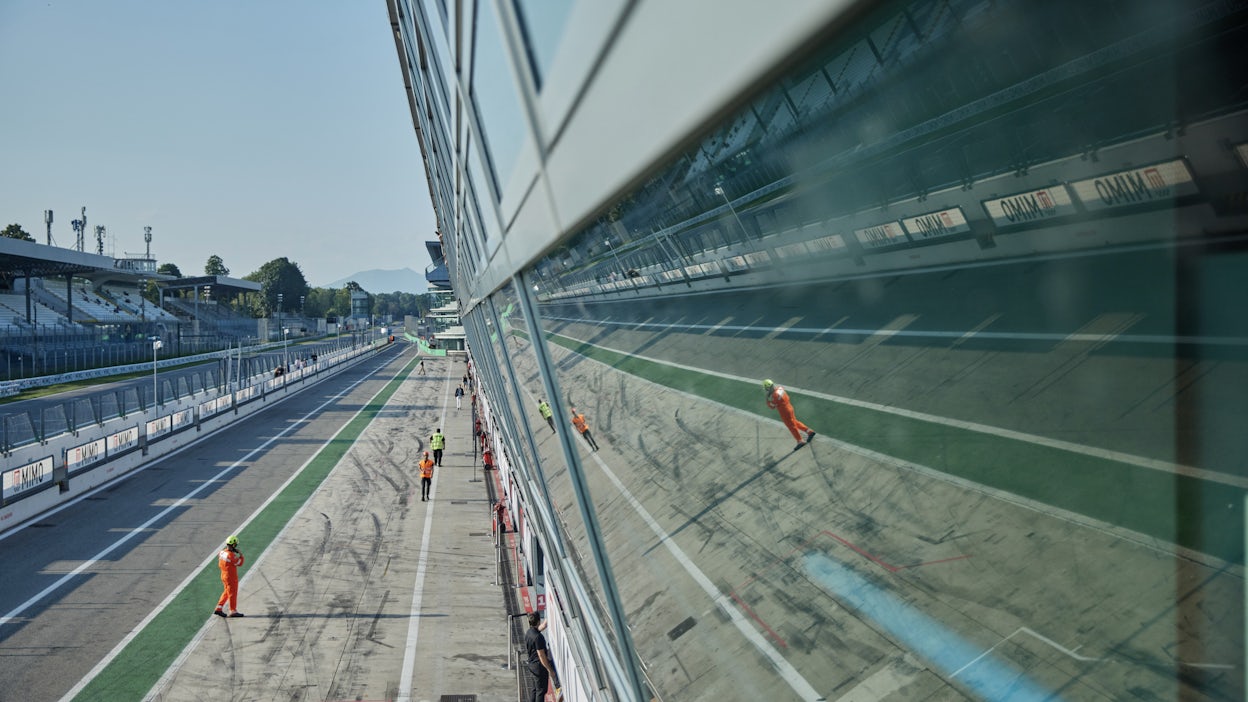
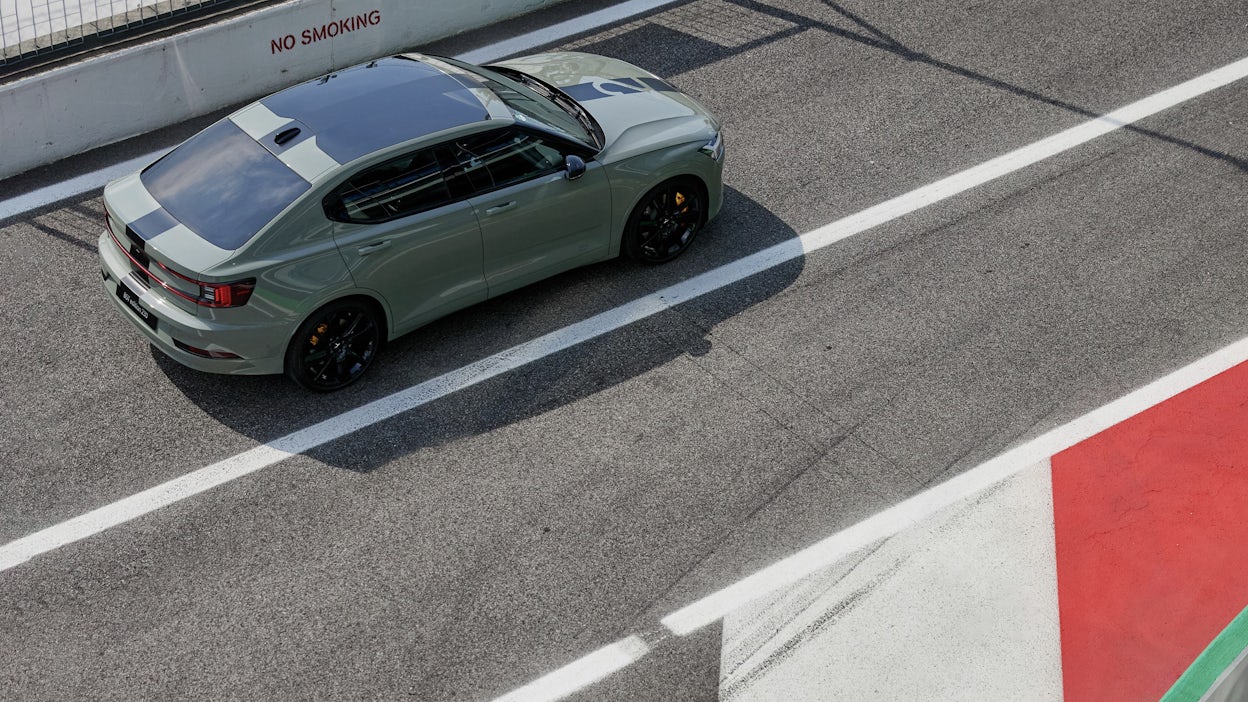
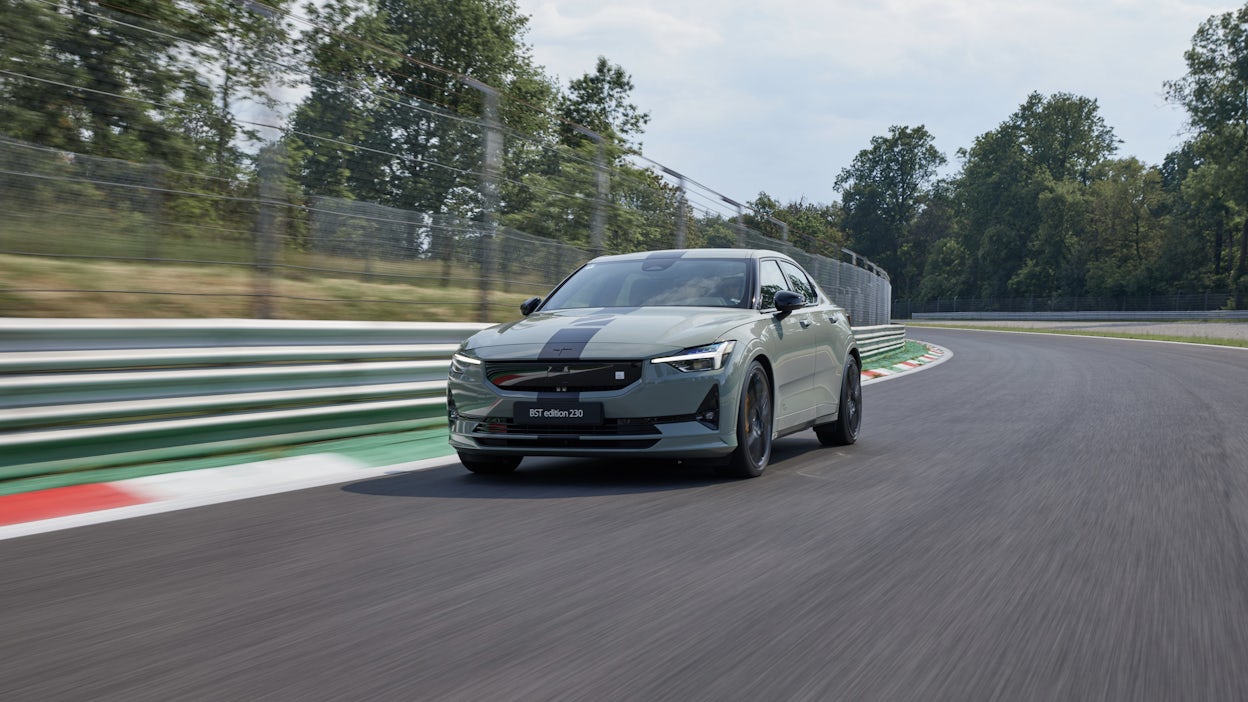
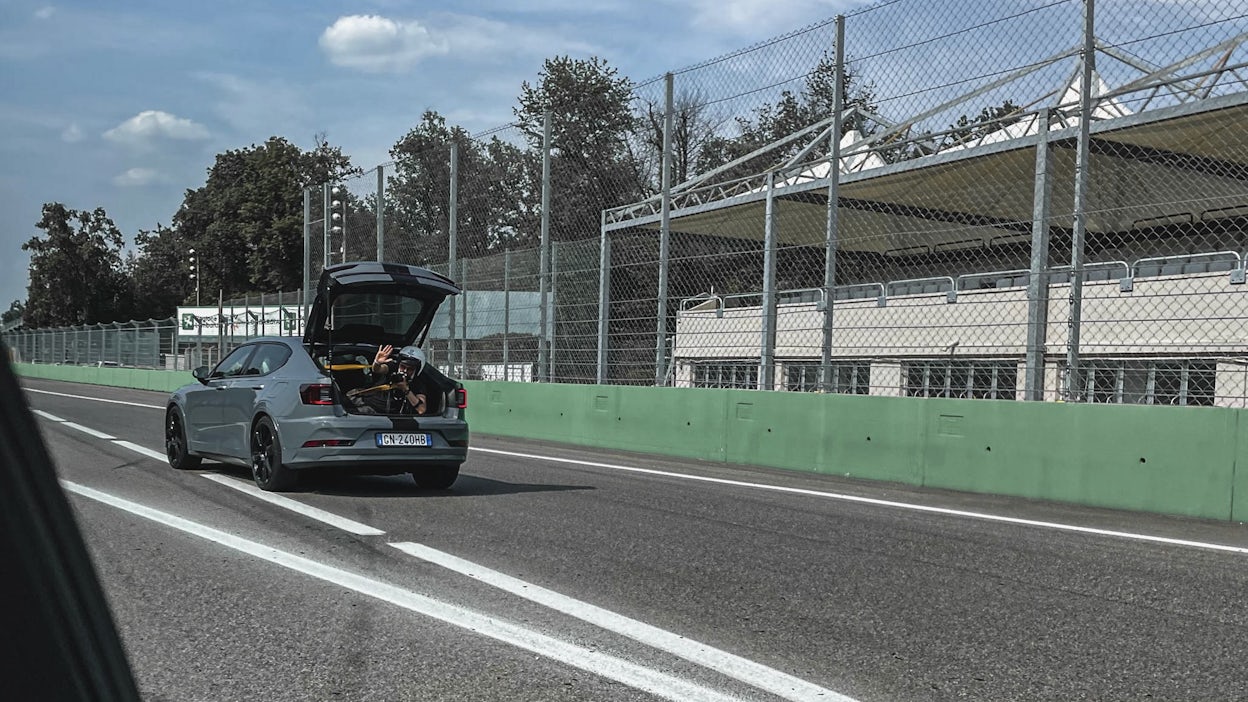
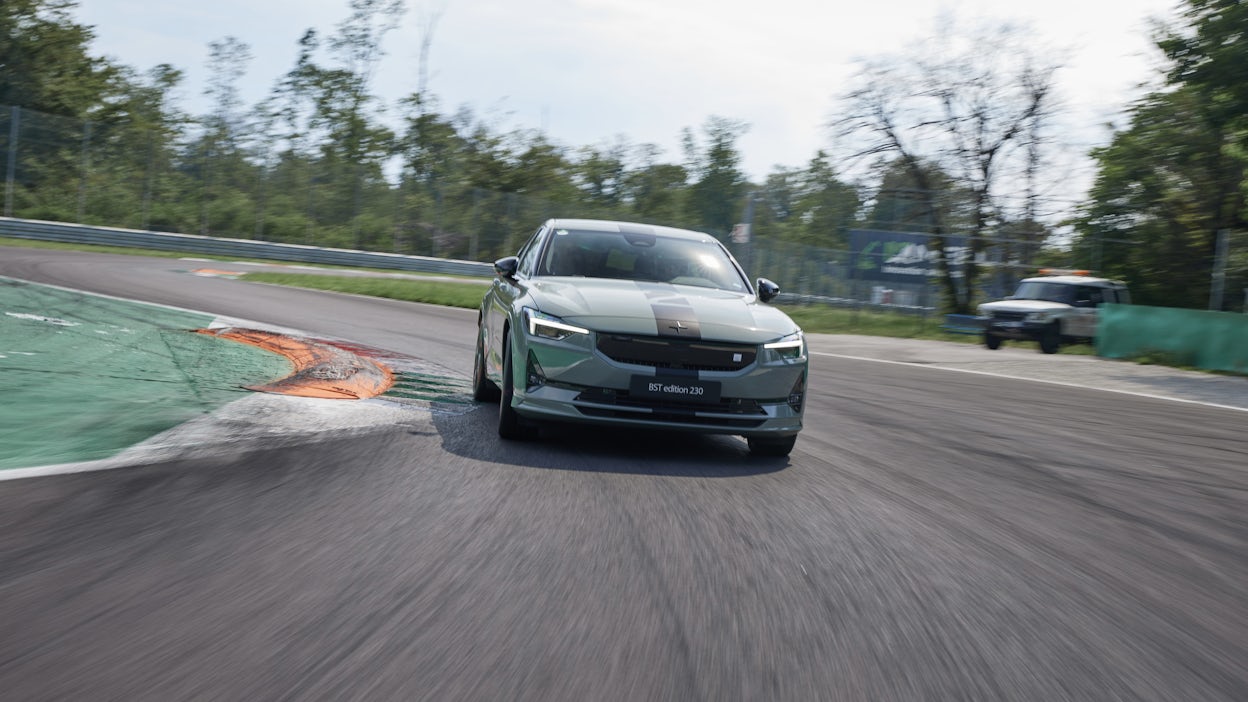





01/05
And that's it. Three whole days at Autodromo Nazionale di Monza, where we had the privilege to view first-hand Italy's love of cars, while also getting the opportunity to show our vision for the future of electric mobility. One small step for Polestar, one giant leap for the future.








